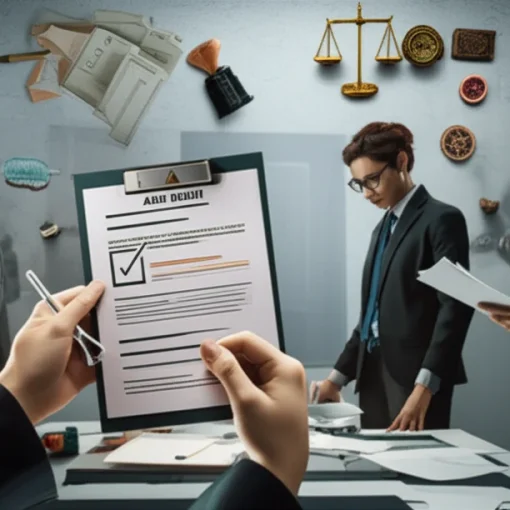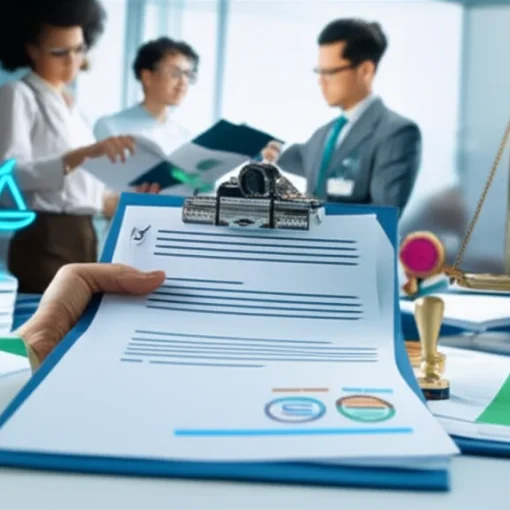Let’s be honest, navigating environmental regulations in Wisconsin can feel like wading through a swamp – complex, murky, and full of hidden pitfalls. Many business owners I’ve talked to, especially the entrepreneurs just getting started or those who’ve been doing things the old way for years, simply don’t realize the depth and breadth of these rules until they’re already in hot water. Maybe they got a visit from someone with the DNR, received a notice about an unreported spill, or had a neighbor complain about something leaving their property during a rainstorm. Trust me, finding out you’re out of compliance this way is way more expensive and stressful than being proactive. We’re going to dive into some of the key areas you absolutely need to understand if you’re doing venture here – things like DNR permits, dealing with potentially hazardous stuff, and making sure your stormwater isn’t causing problems downstream. Ignoring this isn’t just risking a fine; it can seriously impact your operations, reputation, and bottom line.
The Big Picture: Why Environmental Compliance Matters in Wisconsin
Alright, so why should you care about this stuff beyond just avoiding fines? Well, for starters, Wisconsin has some beautiful natural resources – the lakes, the rivers, the forests. Protecting them is kind of a big deal here, and the laws reflect that. The Wisconsin Department of Natural Resources (DNR) is the main agency you’ll be dealing with, and they’re tasked with enforcing a whole host of state and federal environmental laws.
From a business perspective, compliance isn’t just a legal obligation; it’s risk management. Environmental violations can lead to costly cleanup requirements, significant penalties (we’re talking thousands, sometimes tens of thousands, per day), legal battles, and serious damage to your brand image. Nobody wants to be known as the company that polluted the local creek, right? Getting it right from the start, or getting right if you’re not there yet, saves you a ton of headaches and money down the line. It shows you’re a responsible firm owner and a good neighbor.
Navigating the DNR: Permits and Approvals
Okay, let’s talk permits. The DNR requires permits for all sorts of activities that could potentially impact the environment. Think of a permit as permission slip from the state saying, Okay, you can do this, but here are the rules you must follow. What you need depends entirely on what your business does. Are you emitting pollutants into the air? Discharging water into a waterway? Building something that will disturb a lot of land? All of these could require a permit.
Air Permits: Breathing Easy…Legally
If your business has equipment that emits anything into the atmosphere – think boilers, paint booths, generators, manufacturing processes that create dust or fumes – you might need an air permit. Even smaller operations can trigger requirements depending on the type and quantity of emissions.
The DNR has different tiers of air permits, from simple registrations for very small sources to complex permits for major facilities. It’s not always intuitive which category you fall into, and frankly, the paperwork can be daunting. My advice? Don’t guess. Look at the DNR’s guidance documents for air permits or, better yet, talk to someone who understands them. Getting caught operating without a required permit, or violating the conditions of one you have, is a quick way to invite trouble. They’ll want to know how much you’re emitting, what pollutants they are, and how you’re controlling them.
Water Permits: Protecting Our Lakes and Rivers
Wisconsin has a lot of water, and the DNR takes protecting it extremely seriously. If your business discharges any wastewater into surface waters (lakes – rivers, streams) or even into a municipal sewer system (which then discharges into surface waters), you’ll likely need a Wisconsin Pollutant Discharge Elimination System (WPDES) permit.
These permits set limits on the pollutants you can discharge, specify monitoring requirements, and often dictate how you treat your wastewater. Even something seemingly innocuous like process water, cooling water, or water used to wash equipment can be regulated. What many business owners overlook is that discharging into a municipal sewer still often requires complying with local ordinances and potentially state/federal requirements passed down to the municipality. You need to know what’s going down your drains and where it ends up.
Wastewater and Industrial Stormwater: What Flows Out
Okay, so WPDES permits cover planned discharges. But what about rain? Industrial facilities, particularly those with outdoor storage, material handling areas, or processes exposed to the weather, often need a specific type of WPDES permit for their stormwater runoff. This is because rain falling on these areas can pick up pollutants like oil, grease, chemicals, metals, and sediment and carry them into nearby waterways.
An industrial stormwater permit requires you to develop a Stormwater Pollution Prevention Plan (SWPPP). This plan is basically your roadmap for identifying potential sources of pollution from your site and implementing measures to prevent or minimize their contact with rain or snowmelt. You’ll likely need to do regular inspections, sample your runoff periodically, and implement Best Management Practices (BMPs) like covering outdoor materials, maintaining equipment to prevent leaks, and controlling erosion. It sounds like a lot, but it’s critical for keeping your site clean and your enterprise compliant.
Handling the Nasty Stuff: Hazardous Waste
This is an area where mistakes can be particularly costly and dangerous. If your business generates hazardous waste – and you might be surprised at what qualifies – you have strict legal obligations. Hazardous waste isn’t just scary-sounding chemicals; it can include things like used oils, solvents, certain paints, batteries, and even some cleaning products or discarded equipment containing heavy metals.
Identifying and Characterizing Your Waste
The first step, and one that’s often missed, is accurately identifying all the waste your business generates and determining if any of it is hazardous. This involves understanding the regulatory definitions of hazardous waste (based on characteristics like ignitability, corrosivity, reactiv – y, or toxicity, or if it’s on specific EPA lists). You might need to perform tests or rely on information from the product manufacturers (Safety Data Sheets or SDS are your friend here). Misclassifying waste is a big no-no.
Storage, Transport, and Disposal
Once you know you have hazardous waste, there are rules for everything. How you store it (proper containers, labeling, accumulation limits, storage time limits), how you transport it (using licensed hazardous waste haulers, proper manifests), and where you dispose of it (only at permitted hazardous waste facilities). You can’t just throw it in your regular dumpster or pour it down the drain. Ever. Seriously.
Record Keeping and Reporting
Generating hazardous waste also comes with paperwork. You’ll need to track how much you generate, keep copies of manifests (which follow the waste from your site to its final disposal), and potentially submit annual reports to the DNR depending on how much waste you produce. The level of regulation (Generator Status – Very Small Quantity Generator, Small Quantity Generator, Large Quantity Generator) depends on the amount you generate in a calendar month, and your status dictates many of your specific requirements. Getting this wrong is a common compliance issue I see.
Dealing with Rain: Stormwater Runoff
We touched on industrial stormwater already, but it’s worth highlighting the general issue of stormwater because it affects more than just factories.
Construction Site Stormwater
If you’re involved in any construction activity that disturbs a certain amount of land (typically one acre or more, though sometimes less in sensitive areas), you’ll need construction site stormwater permit coverage (often under a general permit). This requires a different type of SWPPP focused on controlling erosion and preventing sediment and other construction-related pollutants from leaving the site in runoff. Think silt fences, erosion control matting, stabilized construction entrances – things that keep the dirt where it belongs. This applies to developers, builders, and sometimes even the landowners.
Making sure your contractors are following the SWPPP is crucial. I’ve seen projects get shut down or fined because erosion controls weren’t maintained properly after a rain event. It’s not just about the environment; it can cause delays and hit your bottom line.
Common Pitfalls I’ve Seen
After years in this field, I’ve seen firm owners trip up in similar ways again and again. Here are a few common ones:
- Assuming Small Business Means Small Rules: Environmental rules often apply based on the activity or the potential impact, not necessarily the size of your payroll. A small print shop using solvents or a small metal fabricator generating scrap metal and used oil can absolutely have significant environmental obligations.
- Not Knowing What You Have/Generate: This goes back to hazardous waste identification, but it applies elsewhere too. Do you know exactly what chemicals are on site? What’s in your wastewater? What comes off your roof or parking lot when it rains? You can’t manage what you don’t understand.
- Relying on Outdated Information: Regulations change! What was okay ten years ago might not be today. Relying on what a former owner did, or what worked at your last company in a different state, is risky.
- Ignoring Paperwork and Record Keeping: Permits and regulations call for documentation – monitoring records, inspection logs, manifests, training records. If the DNR comes knocking, they will ask for these. Not having them is a compliance violation in itself.
- Lack of Employee Training: Your employees are on the front lines. Do they know how to identify hazardous waste? How to store chemicals safely? What to do if there’s a small spill? Proper training is essential for preventing problems and maintaining compliance.
- Ignoring Warning Signs: Small leaks, discolored discharges, strange odors – these can be indicators of bigger problems or potential violations. Don’t just cross your fingers and hope they go away. Investigate and fix them.
Where to Get Help and Stay Updated
Look, this isn’t meant to scare you, but to inform you. Environmental compliance is a non-negotiable part of doing organization responsibly in Wisconsin. The good news is, you don’t have to figure it all out alone.
The Wisconsin DNR website is a fantastic, albeit sometimes overwhelming, resource. They have extensive guidance documents, permit application forms, and contacts for specific programs. Start there, but be prepared to dig a bit.
For more hands-on help, consider:
- Environmental Consultants: These professionals specialize in understanding and applying environmental regulations. They can help you identify your obligations, apply for permits, develop plans (like SWPPPs), perform site assessments, and offer training. Good consultants are worth their weight in gold.
- Industry Associations: Many industry groups offer resources and guidance specific to the environmental challenges their members face.
- Legal Counsel: For complex issues, enforcement actions, or when you’re making significant changes to your operations, consulting with an environmental attorney is a wise move.
Staying ahead of the curve is key. Regulations can change, and your business operations might evolve, triggering new requirements. Make compliance a regular part of your business operations, not just something you think about when you get a scary letter. Trust me, a little proactive effort now saves a lot of pain later.




